Filter by
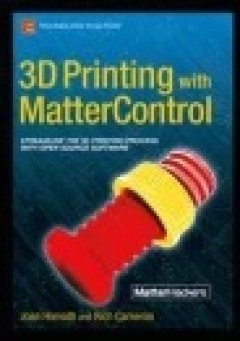
3D Printing with MatterControl
In 3D Printing With MatterControl, Joan Horvath and Rich Cameron, the team behind Mastering 3D Printing, explain step-by-step how to use the MatterControl program, which allows you to control many common types of 3D printers (including both cartesian and delta style machines). 3D Printing With MatterControl can stand alone, or it can be a companion to Mastering 3D Printing to show you how to in…
- Edition
- -
- ISBN/ISSN
- 978-1-4842-1055-0
- Collation
- -
- Series Title
- -
- Call Number
- 006.6 HOR t

3D Printing with Delta Printers
Do you find yourself wondering what the fuss is about a delta 3D printer? Perhaps you’ve decided to buy one but all of your 3D printing friends are busily perfecting their Cartesian printers. Maybe you find yourself stymied by the fact that your delta printer has very different needs for setup, configuration, calibration, and maintenance than Cartesian printers. 3D Printing with Delta Prin…
- Edition
- -
- ISBN/ISSN
- 978-1-4842-1173-1
- Collation
- -
- Series Title
- -
- Call Number
- 006.6 BEL t
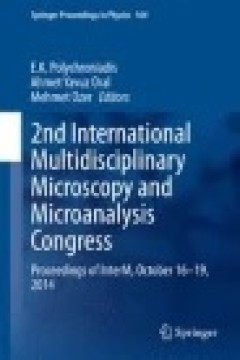
2nd International Multidisciplinary Microscopy and Microanalysis Congress: Pr…
The 2nd International Multidisciplinary Microscopy and Microanalysis Congress & Exhibition (InterM 2014) was held on 16–19 October 2014 in Oludeniz, Fethiye/ Mugla, Turkey. The aim of the congress was to gather scientists from various branches and discuss the latest improvements in the field of microscopy. The focus of the congress has been widened in an "interdisciplinary" manner, so as t…
- Edition
- -
- ISBN/ISSN
- 978-3-319-16919-4
- Collation
- -
- Series Title
- Springer Proceedings in Physics
- Call Number
- 543.54 INT i
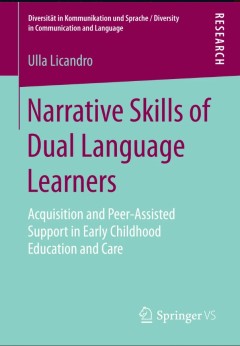
Narrative Skills of Dual Language Learners
The current work follows the premise that fictional oral narratives represent socio-emotionally and academically relevant communicative practices. Two studies are presented, aiming to (1) analyze the narrative skills of preschool-age Turkish-German dual language learners (DLLs) and (2) explore a peer-assisted approach to supporting DLLs’ narrative skills in early childhood education and care.…
- Edition
- 1
- ISBN/ISSN
- -
- Collation
- -
- Series Title
- -
- Call Number
- -

Encyclopedia of Biometrics
This encyclopedia provides a comprehensive reference to topics in biometrics including concepts, modalities, algorithms, devices, systems, security, performance testing, applications and standardization. With an A–Z format and over 1400 entries, it provides easy access to relevant information on all aspects of biometrics for those seeking entry into this broad field. Entries are written by…
- Edition
- -
- ISBN/ISSN
- 978-1-4899-7488-4
- Collation
- 337 b/w illustrations, 486 illustrations in colour
- Series Title
- -
- Call Number
- -
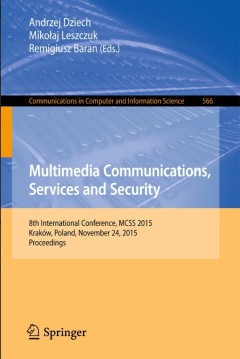
Multimedia Communications, Services and Security
This volume constitutes the refereed proceedings of the 8th International Conference on Multimedia Communications, Services and Security, MCSS 2015, held in Krakow, Poland, in November 2015. The 16 full papers included in the volume were selected from 39 submissions. The papers cover ongoing research activities in the following topics: multimedia services; intelligent monitoring; audio-visua…
- Edition
- 1
- ISBN/ISSN
- -
- Collation
- -
- Series Title
- -
- Call Number
- -

Motion Correction in Thoracic Positron Emission Tomography
Respiratory and cardiac motion leads to image degradation in Positron Emission Tomography (PET), which impairs quantification. In this book, the authors present approaches to motion estimation and motion correction in thoracic PET. The approaches for motion estimation are based on dual gating and mass-preserving image registration (VAMPIRE) and mass-preserving optical flow (MPOF). With mass-pre…
- Edition
- 1
- ISBN/ISSN
- 978-3-319-08391-9
- Collation
- XI, 88
- Series Title
- SpringerBriefs in Electrical and Computer Engineering
- Call Number
- -
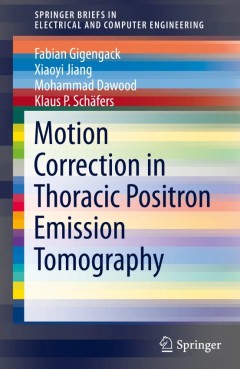
Motion Correction in Thoracic Positron Emission Tomography
Respiratory and cardiac motion leads to image degradation in Positron Emission Tomography (PET), which impairs quantification. In this book, the authors present approaches to motion estimation and motion correction in thoracic PET. The approaches for motion estimation are based on dual gating and mass-preserving image registration (VAMPIRE) and mass-preserving optical flow (MPOF). With mass-pre…
- Edition
- 1
- ISBN/ISSN
- 978-3-319-08391-9
- Collation
- XI, 88
- Series Title
- SpringerBriefs in Electrical and Computer Engineering
- Call Number
- -

Emerging Research in Computing, Information, Communication and Applications …
This proceedings volume covers the proceedings of ERCICA 2015. ERCICA provides an interdisciplinary forum for researchers, professional engineers and scientists, educators, and technologists to discuss, debate and promote research and technology in the upcoming areas of Computing, Information, Communication and their Applications. The contents of this book cover emerging research areas in field…
- Edition
- -
- ISBN/ISSN
- 978-981-10-0287-8
- Collation
- 111 b/w illustrations, 269 illustrations in colour
- Series Title
- -
- Call Number
- -

Emerging Research in Computing, Information, Communication and Applications …
This proceedings volume covers the proceedings of ERCICA 2015. ERCICA provides an interdisciplinary forum for researchers, professional engineers and scientists, educators, and technologists to discuss, debate and promote research and technology in the upcoming areas of Computing, Information, Communication and their Applications. The contents of this book cover emerging research areas in field…
- Edition
- -
- ISBN/ISSN
- 978-81-322-2553-9
- Collation
- 109 b/w illustrations, 257 illustrations in colour
- Series Title
- -
- Call Number
- -
 Computer Science, Information & General Works
Computer Science, Information & General Works  Philosophy & Psychology
Philosophy & Psychology  Religion
Religion  Social Sciences
Social Sciences  Language
Language  Pure Science
Pure Science  Applied Sciences
Applied Sciences  Art & Recreation
Art & Recreation  Literature
Literature  History & Geography
History & Geography